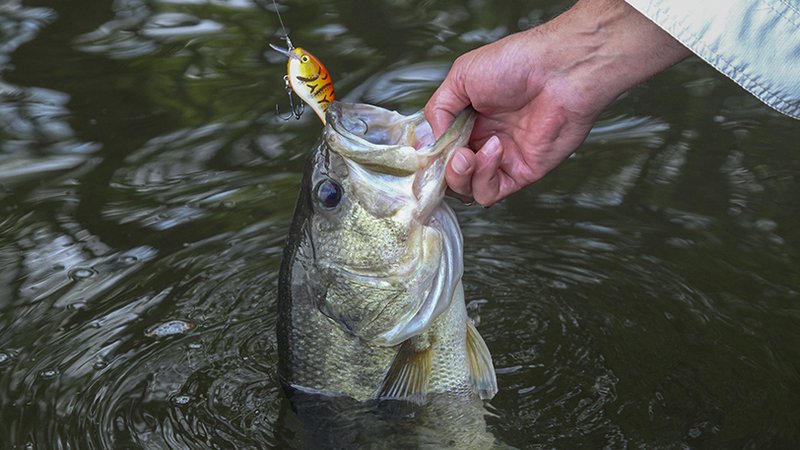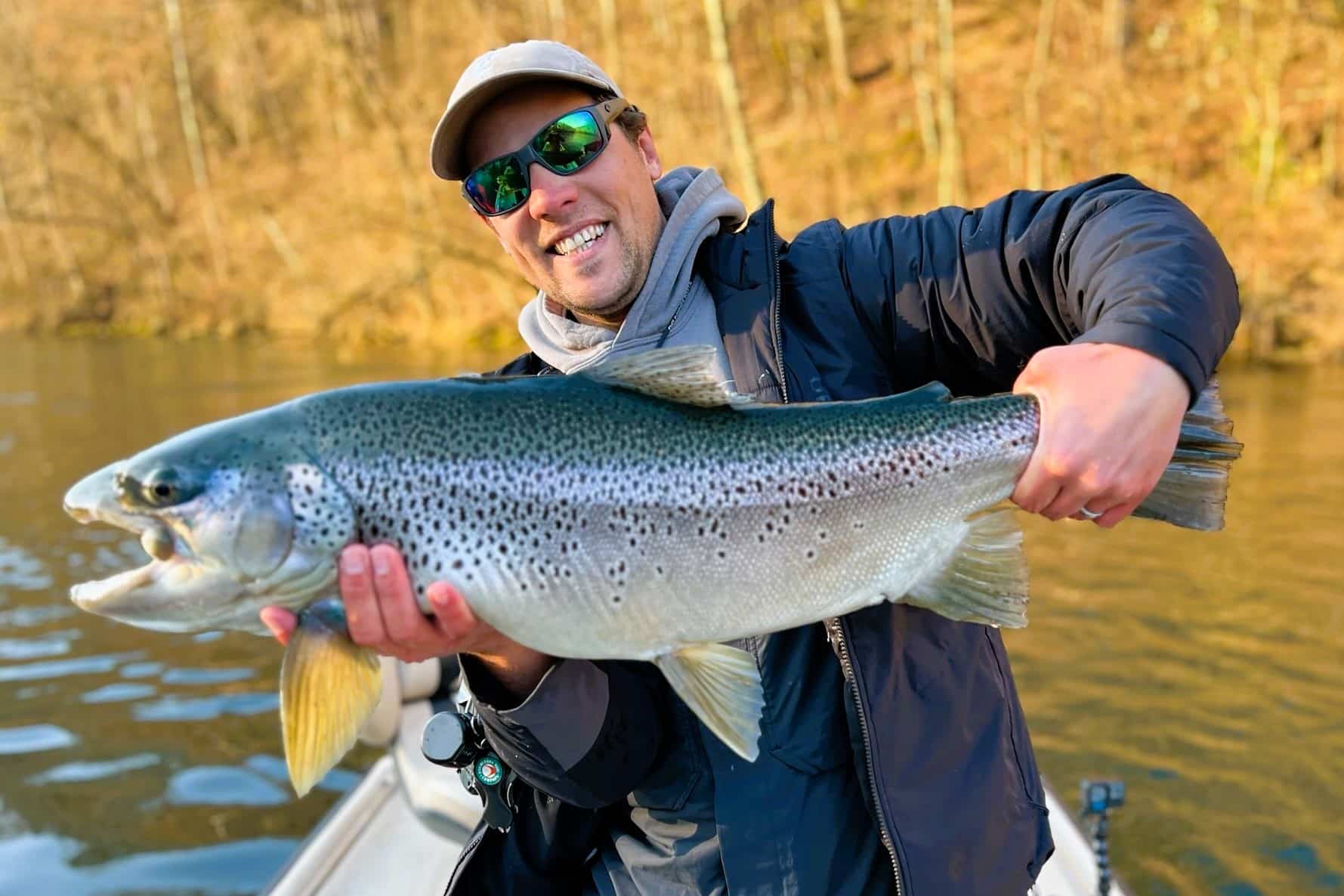Bass show increased trophy potential at Lake Ouachita
ON 07-25-2018

July 25, 2018
Randy Zellers
Assistant Chief of Communications
HOT SPRINGS – Many Lake Ouachita largemouths may have an increased aptitude for growth, thanks to a pilot Florida bass stocking project implemented by the Arkansas Game and Fish Commission from 2007-2014.
More than 812,600 pure Florida-strain largemouth fingerlings were stocked in the Rabbittail area on the north shore of Ouachita during the stocking project to determine the ability to introduce the genetics of the popular strain of largemouths, known for its ability to reach double-digit weights.
Sean Lusk, AGFC fisheries management biologist in Hot Springs, says the stockings were not meant to add more fish to the system, but to introduce the genetics to the system.
“Stocked fish generally contribute very little to the overall number of bass in large lakes with natural reproduction, thus we concentrated stockings in this fairly isolated area of the lake to increase the odds that two bass with Florida genetics would spawn and further spread the genes,” Lusk said. “In large reservoirs around the southeast U.S., the genetic composition really begins shifting once stocked fish and their offspring begin reproducing.”
The Lake Ouachita project has mimicked similar stocking results in other states, showing a definite increase in Florida bass genetics in Rabbittail.
“From 2007-2014 the percent of bass in the area with at least 50 percent Florida genetics went from 1 to 34 percent,” Lusk said. “And the percent of bass with at least some Florida genetics appearing in their DNA went to 91 percent.”
The genetics didn’t just stay in Rabbittail. Further genetic testing showed a smaller, but evident shift in genetics near popular weigh-in facilities on the lake.
“This is likely attributed to fishing tournament activity, Lusk said. Rabbittail has a history of being a popular location for tournament anglers.”
Lusk warns anglers that the genetics alone do not produce trophies, and many other factors determine growth rates of bass, including gender, forage base, lifespan and the type of habitat available.
“The bass need good, complex habitat, long enough lifespans to show their potential and a solid forage base that includes larger prey items, such as large gizzard shad and suckers for the big female Florida bass to feed on,” Lusk said. “Lake Ouachita is not the typical Florida bass trophy fishery, but conditions are shaping up to increase that potential.”
According to Lusk, the results of the genetic testing, increase in aquatic vegetation and public comments gathered through the recent workshops for the revision of the Lake Ouachita Management Plan have prompted biologists to continue Florida-bass stockings in the lake through the nursery pond on the west end of the lake and additional stockings at Rabbittail in 2019.
Recent News

Arkansas Wildlife Weekly Fishing Report
Apr. 25, 2024
Subscribe to Our Weekly Newsletter E-mails
Don’t miss another issue. Sign up now to receive the AGFC Wildlife Weekly Newsletter in your mailbox every Wednesday afternoon (Waterfowl Reports are published weekly during waterfowl season and periodically outside the season). Fishing Reports arrive on Thursdays. Fill in the following fields and hit submit. Thanks, and welcome!

